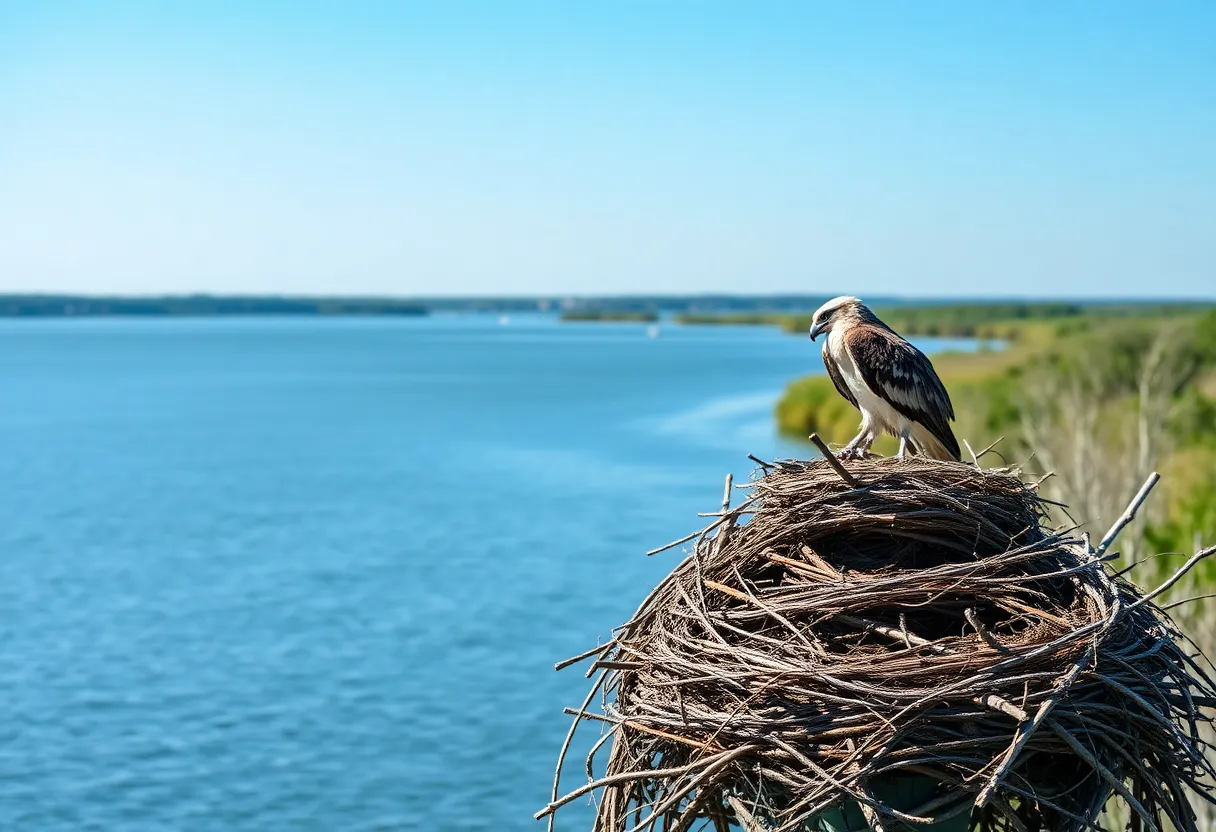News Summary
A concerning trend has emerged regarding the declining population of ospreys in Virginia’s Chesapeake Bay, with breeding success decreasing due to reduced menhaden fish populations and increasing predation pressure. Researchers observed a troubling pattern indicating that ospreys are struggling to fledge enough chicks for population stability. Environmentalists warn of potential population declines if these trends continue, emphasizing the urgent need for conservation efforts to safeguard ospreys and their habitats.
Gloucester Point, Virginia – A concerning trend regarding the declining population of ospreys has emerged in Virginia’s Chesapeake Bay region, as recent observations reveal a drop in breeding success attributed to diminishing menhaden fish populations and increased predation pressure. This decline poses a potential threat to the species that has successfully rebounded since the banning of the pesticide DDT in 1972, which allowed their numbers to rise to thousands across the U.S.
Bryan Watts, a research professor and director of the Center for Conservation Biology at The College of William & Mary, has documented a troubling pattern linked to the failure of osprey nests, including one recently observed atop a wooden duck blind in Gloucester Point, which was ultimately taken over by diving terns. This illustrates the lack of successful breeding for that year, corroborating observations of reduced reproductive success among ospreys throughout the Chesapeake Bay in recent years.
Ospreys, known for their fish-eating habits, require a stable food supply to maintain their populations. Watts has highlighted the negative impact of declining populations of menhaden, small schooling fish that form an essential part of the osprey diet. To sustain their population, osprey pairs must successfully fledge an average of 1.15 chicks per year. However, recent figures in parts of Chesapeake indicate that the average is less than half that threshold, with some areas reporting reproductive success below one-tenth of the necessary rate for population stability.
The menhaden fishing industry holds significant economic value, primarily for fish oil, fish meal, and agricultural feed products. Fishermen have harvested at least 1.1 billion pounds of menhaden every year since 1951. Industry representatives contest the assertion that overfishing is responsible for the decline of ospreys, suggesting alternative factors such as climate change, pollution, and habitat development may also be contributing to these worrying trends.
Federal data indicates a decline in osprey breeding success in various locations, even where menhaden fishing does not occur. This points to possible broader ecological issues that could impact osprey populations beyond fishing practices. The Atlantic States Marine Fisheries Commission is now examining potential management strategies to address concerns surrounding menhaden populations in relation to both the fishing industry and predator pressures.
The concerns are further compounded by evidence from recent wildlife observations documenting predation of osprey nests by other species, including bald eagles, owls, crows, and even minks. Notably, the predation by minks has emerged as a new and alarming threat, underscoring the evolving challenges ospreys face in their breeding environments.
Environmentalists are sounding alarms about the potential for substantial declines in osprey populations if current trends in breeding success continue. Historical data reveals a significant increase in osprey populations since the 1960s, attributable to concerted conservation efforts. However, without the implementation of protective measures, such as safeguarding osprey platforms against these newly identified predators, the future of ospreys in Virginia’s Chesapeake Bay remains uncertain.
As awareness grows about the interplay between menhaden fishing practices and osprey reproductive success, conservationists advocate for immediate actions to mitigate these threats. The potential for further declines in osprey populations represents a critical conservation concern that could reverberate through the ecosystem of the Chesapeake Bay, emphasizing the need for a collaborative approach among stakeholders.
Deeper Dive: News & Info About This Topic
HERE Resources
Additional Resources
- Los Angeles Times: Osprey Chicks Are Dying in Nests
- Wikipedia: Osprey
- MSN: Osprey Came Back from the Brink
- Google Search: Osprey Population Decline
- Chesapeake Bay Magazine: Osprey Researchers Find Unexpected Nest Robber
- Encyclopedia Britannica: Osprey

Author: STAFF HERE VIRGINIA BEACH WRITER
The VIRGINIA BEACH STAFF WRITER represents the seasoned team at HEREVirginiaBeach.com, your trusted source for actionable local news and information in Virginia Beach, Virginia Beach City, and beyond, delivering "news you can use" with comprehensive coverage of product reviews for personal and business needs, local business directories, politics, real estate trends, neighborhood insights, and state news impacting the region—supported by years of expert reporting and strong community input, including local press releases and business updates, while offering top reporting on high-profile events like the Virginia Beach Neptune Festival, East Coast Surfing Championship, and military homecoming celebrations, alongside key organizations such as the Virginia Aquarium, Virginia Beach Convention Center, and Oceana Naval Air Station, plus leading businesses in tourism and defense like Busch Gardens and Northrop Grumman, and as part of the broader HERE network including HEREWilliamsburg.com, providing credible, in-depth insights into Virginia's vibrant landscape. HERE Virginia Beach HERE Williamsburg





